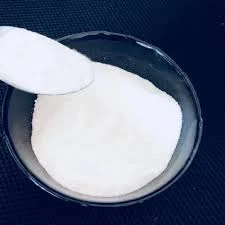
Δεκ . 29, 2024 14:42 Back to list
hydroxyethyl cellulose viscosity concentration
Understanding Hydroxyethyl Cellulose Viscosity and Concentration
Hydroxyethyl cellulose (HEC) is a non-ionic cellulose ether that has gained significant attention in various industries due to its unique properties, such as thickening, gelling, and film-forming capabilities. This article delves into the relationship between HEC viscosity and concentration, highlighting its implications in applications ranging from pharmaceuticals to personal care products.
What is Hydroxyethyl Cellulose?
HEC is derived from natural cellulose, which is sourced from plant materials. The production process involves the reaction of cellulose with ethylene oxide, introducing hydroxyethyl groups into the cellulose backbone. This modification greatly enhances the solubility of cellulose in water, enabling HEC to dissolve readily and form viscous solutions. HEC is widely used as a thickening agent in various formulations due to its ability to increase viscosity while maintaining a stable consistency.
The Importance of Viscosity
Viscosity is a measure of a fluid's resistance to flow and is a critical property for materials used in formulation and manufacturing processes. In the context of HEC, viscosity plays a vital role in determining how the material behaves in solution. As the concentration of HEC in water increases, the viscosity of the solution changes significantly. This relationship is crucial in applications such as coatings, adhesives, and cosmetics, where the flow and spreadability of a formulation are paramount.
Viscosity and Concentration Relationship
The relationship between the viscosity of HEC and its concentration can be described by two primary observations
hydroxyethyl cellulose viscosity concentration

1. Increased Concentration Leads to Higher Viscosity As the concentration of HEC in a solution increases, the interactions among HEC molecules become more pronounced. At lower concentrations, HEC molecules are relatively free to move; however, as concentration rises, these molecules begin to entangle and form a network, resulting in increased resistance to flow and thus higher viscosity.
2. Non-Linear Growth in Viscosity The increase in viscosity is not always linear with respect to concentration. In fact, at certain concentrations, a rapid increase in viscosity can occur, often leading to a phenomenon known as shear-thinning. This behavior is particularly advantageous in applications where ease of handling and application is crucial, as the viscosity can decrease under shear force, allowing for smoother application and handling.
Applications of Hydroxyethyl Cellulose
The properties of HEC make it suitable for a wide range of applications. In the pharmaceutical industry, it serves as a thickening agent in topical formulations, ensuring that consistency and adherence to the skin are maintained. In personal care products like shampoos and conditioners, HEC provides excellent viscosity management, enhancing the sensory feel and performance of the product.
In the construction industry, HEC is utilized in the formulation of mortars and paints. Its ability to improve the workability and pumpability of these materials is vital, allowing for smoother application and better adhesion to surfaces. Furthermore, the controlled release of active ingredients is a critical aspect in various formulations, which HEC can facilitate through its viscosity-enhancing properties.
Conclusion
Understanding the viscosity-concentration relationship of hydroxyethyl cellulose is essential for optimizing its use in various applications. As a versatile ingredient, HEC’s ability to modify viscosity plays a crucial role in determining the final performance of products across multiple industries. By carefully controlling the concentration of HEC in formulations, manufacturers can achieve desired viscosities that enhance usability, application, and overall product effectiveness.
In summary, hydroxyethyl cellulose is not only a valuable thickening agent but also a complex material whose behavior can be finely tuned through concentration adjustments, thereby influencing a wide array of industrial processes and consumer products. As research continues and new applications are explored, the role of HEC in enhancing product performance will undoubtedly expand further, paving the way for innovative solutions in numerous fields.
-
Unlocking the Benefits of HPMC Products: A Gateway to Versatile Applications
NewsAug.07,2025
-
Unleashing the Potential of HPMC Ashland: A Comprehensive Look
NewsAug.07,2025
-
Tile Bonding Cellulose: The Key to Superior Adhesion and Durability
NewsAug.07,2025
-
Hydroxypropyl Methylcellulose Powder: The Versatile Component in Modern Pharmaceuticals
NewsAug.07,2025
-
Hydroxyethyl Cellulose: The Versatile Solution for Various Industries
NewsAug.07,2025
-
Hydroxyethyl Cellulose (HEC): The Versatile Polymer for Various Applications
NewsAug.07,2025







